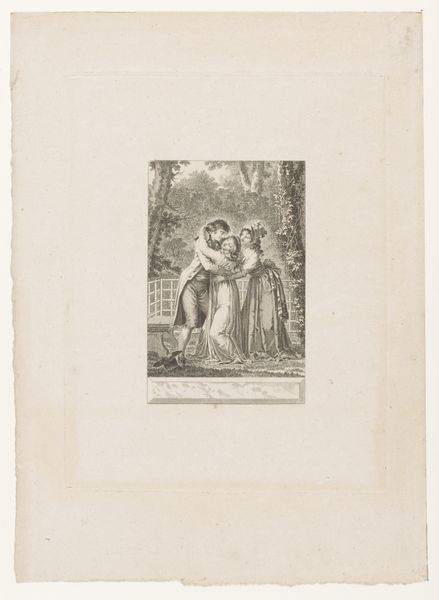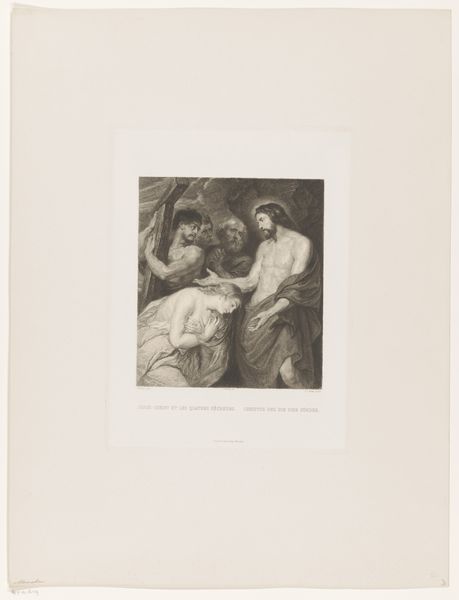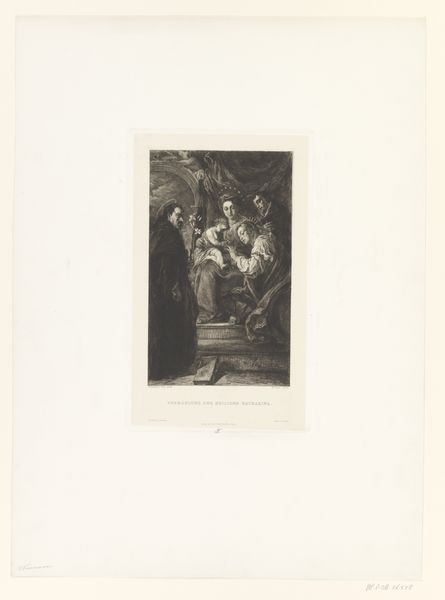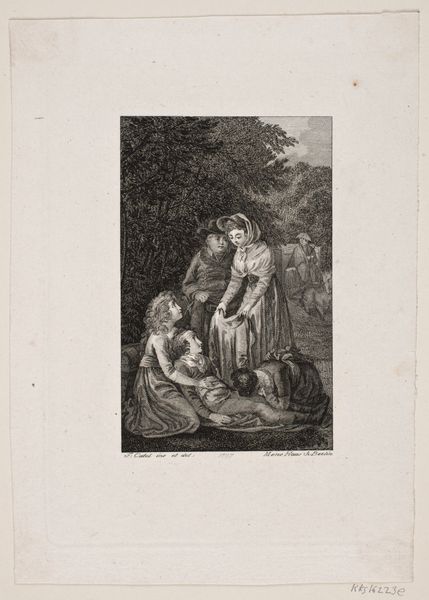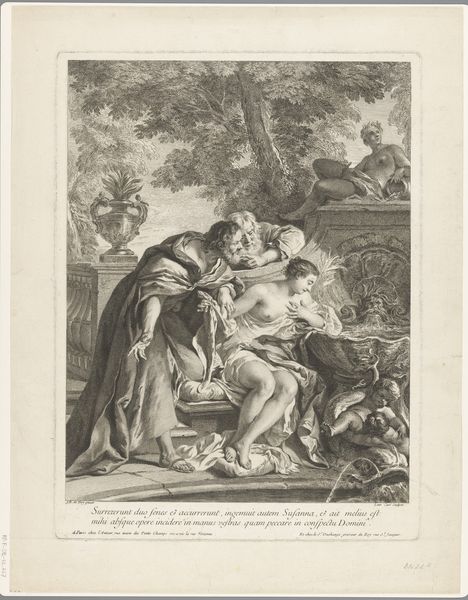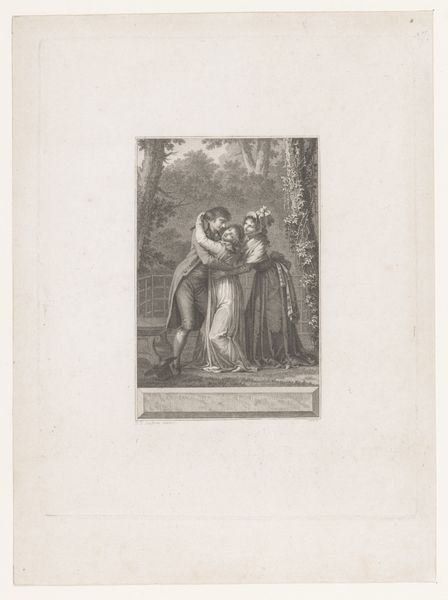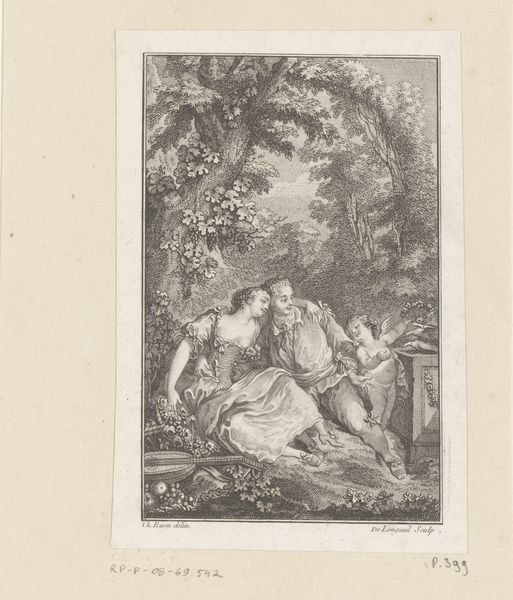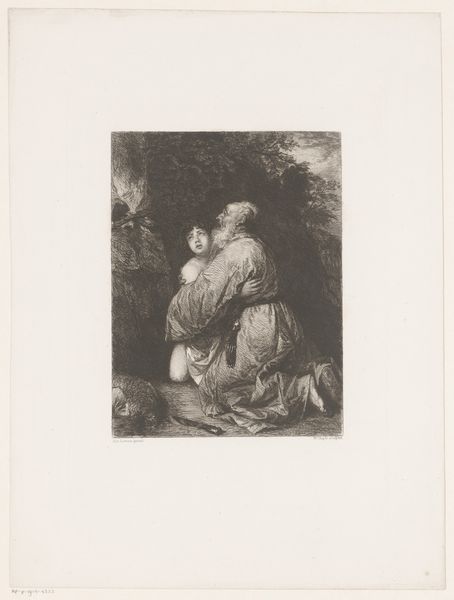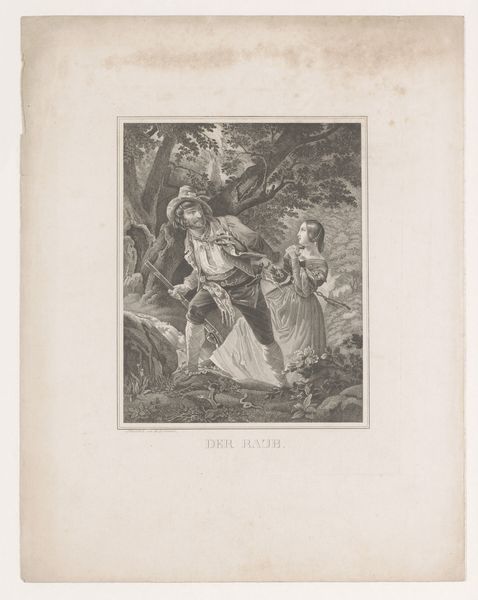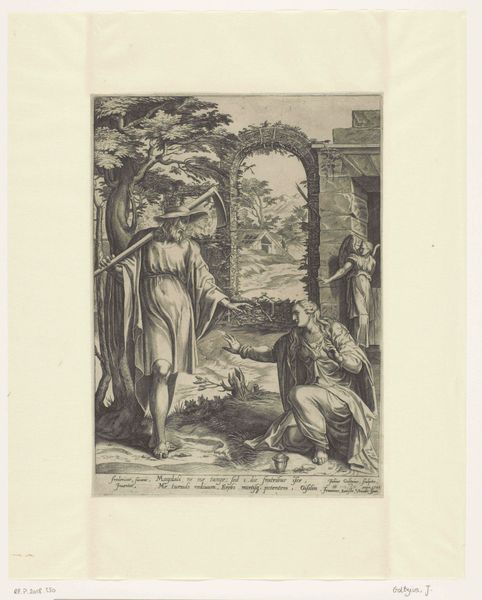
print, etching, engraving
#
narrative-art
#
shading to add clarity
# print
#
etching
#
old engraving style
#
landscape
#
figuration
#
remaining negative space
#
engraving
Dimensions: height 319 mm, width 239 mm
Copyright: Rijks Museum: Open Domain
Curator: Here we have Georges Bellenger’s print, “Daphnis et Chloé”, created between 1862 and 1915. It is executed as an engraving and etching, typical of his favored medium. Editor: My immediate impression is that this print captures a stolen moment of intimacy. There's a beautiful tension between the figures, with an almost anxious atmosphere, partially created by the intricate and dense linework. Curator: Indeed. The subject references the ancient Greek novel of the same name, a pastoral romance that, after being rediscovered in the Renaissance, experienced various periods of revival across the centuries. Bellenger, through this print, aligns himself with those artists and literary figures drawn to the narrative's themes. Editor: Thinking about these themes, the narrative plays with naive sexuality, exploration and eventual, sanctioned love. Looking through a contemporary lens, do you see this representation as reinforcing certain historical power dynamics and gendered roles within romantic narratives? Curator: It is hard to dismiss those frameworks, considering the literary establishment heavily promoted those. We have to remember this etching exists within the broader history of both the novel and artistic representations of it, oscillating between idyllic escape and commentary on social structures. Prints such as this made these classical stories accessible to wider audiences. Editor: It makes one think about how access itself becomes a curated privilege. Etchings and engravings often depict scenes of leisure or morality tales meant for a certain class of consumers, influencing the perception of social life. Does Bellenger truly subvert that? Or reinforce it? Curator: Subversion isn’t exactly the core aim, but, through its stylistic choices— the looseness of the lines, the sketchy quality — moves away from academic interpretations, inviting a more subjective, perhaps even modern, reading of the ancient text. This very much places him as a unique participant within a longer history of influence. Editor: Looking at it now, that’s very apparent. It’s fascinating how a seemingly straightforward pastoral scene can be so layered with artistic and socio-political history. Curator: Exactly. Bellenger’s print serves as a beautiful lens to examine our understanding of class, narrative and power through art over time.
Comments
No comments
Be the first to comment and join the conversation on the ultimate creative platform.

